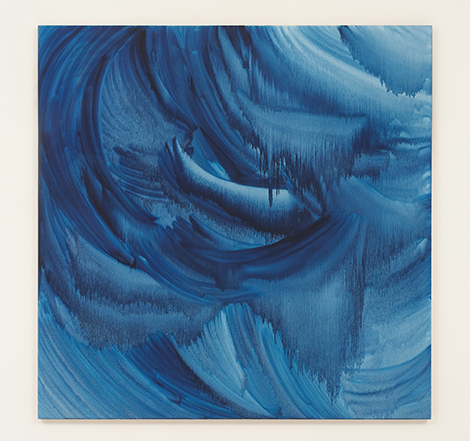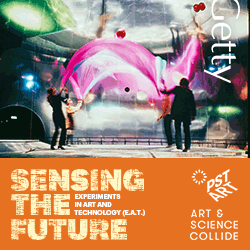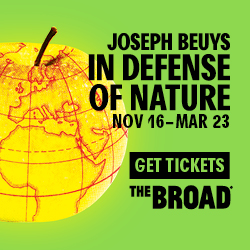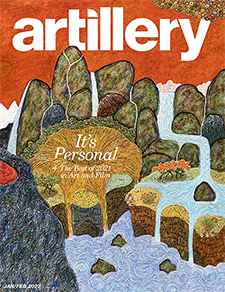Chinese dissident artist Zhao Zhao is inevitably associated with Ai Weiwei, both because he worked with the renowned older artist and because he has experienced the same persecution at the hands of the Chinese government—arrest, travel bans, confiscation of artwork. And also like his former employer, Zhao does not refrain from critiquing the state of affairs in his home country.
In the 10 large oil-on-linen canvases in his first exhibition in Los Angeles, Zhao abstractly but explicitly depicts the skies of Beijing, a city known for its oppressive pollution (which occasionally is so severe as to turn day into night). His color palette is exclusively shades of blue, most on the darker side of the spectrum. While the subtly gradated billows of color might suggest Sam Francis, there is nothing ethereal or meditative here: Zhao’s brushstrokes are full of dark energy, suggesting swirling, tempestuous clouds pregnant with portent. Sky No. 18 (all paintings 2014) is a particular standout, with blues that are almost black with only timid glimmers of light peaking through. The spatial depth of many of the works, such as in Sky No. 14, gives the impression that the viewer is looking into a roiling vortex or funnel.
Some of the smaller canvases, such as Sky No. 1 and Sky No. 2, offer a lightening (literally) of the tension, as the blues are softer, but we know the reality behind the allure. While the vibrancy of the blue hues and Zhao’s deft handling of paint may be seductively beautiful, just as the material goods whose production led to this pollution are seductive, the overall effect is ominous and even claustrophobic; the miasma easily overwhelms the viewer.
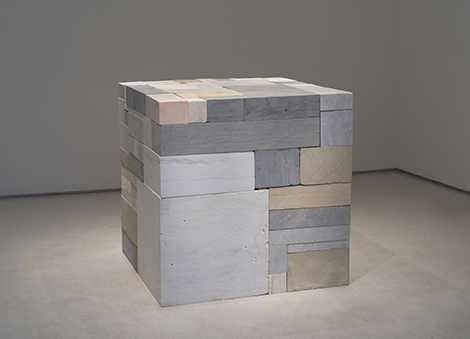
Zhao Zhao, Repetition, 2013/14. Courtesy of the artist and Roberts & Tilton, Culver City, California.
Many Western abstract artists in the mid-20th century vociferously maintained that their works were devoid of allusion or referent, practicing a “medium specificity” that meant they needed to focus only on the paint and the canvas and elide all figuration or narrative. Zhao Zhao demonstrates how abstraction is not only visually appealing but is also able to produce a powerful commentary on current events.
Along with the paintings is a single sculpture, Repetition (2013-14), consisting of white marble, limestone, and sandstone bricks interlocked in a smooth, perfect cube. It resembles a Carl Andre piece folded up on itself, but it isn’t simply a take on minimalism. The bricks are actually pieces of wrecked statues of Buddha, demolished during Mao’s Cultural Revolution. The simple shape of the work is belied by the material’s haunted past; within those now-smooth bricks are memories of the violence and devastation of Chinese culture during Mao’s reign.
The piece can also be seen as a commentary on China’s current political state. The title, Repetition, suggests Mao’s oppression is happening again under China’s current government, a view substantiated by Zhao’s own experiences. The minimalist cube is an apposite transmitter of this message, as its impression of muteness mirrors the suppression of Chinese artists, intellectuals and political dissidents.

